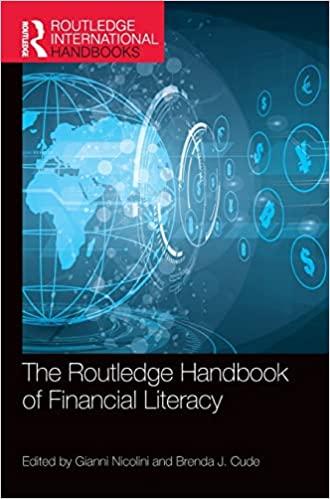A decrease in which of the following will increase the current value of a stock according to the dividend growth model?
| | a.Number of future dividends, provided the number is less than infinite. |
| | d.Both the discount rate and the dividend growth rate. |
Which of the following is a common feature of preferred stock?
| | a.Voting for board of directors |
| | b.A maturity date to return capital to preferred shareholders |
| | c.Regular paying dividends |
| | d.Non-cumulative dividends |
Currently, a firm has a benchmark PE of 18.7 and an EPS of $4.18 (annual). Earnings are expected to grow 3.20% annually. What is the percent change in the stock price after the first year?
What is the primary source of a company's stock appreciation?
| | a.Company investment of retained earnings |
| | b.Company investment of dividends |
| | c.Company investment of retained earnings and dividends |
| | d.Shareholder investment of dividends |
| | e.Shareholder investment of retained earnings |
A new firm in a rapidly growing industry. The company is planning on increasing its annual dividend by 15% a year for the next four years and then decreasing the growth rate to 3.50% per year. The company just paid its annual dividend in the amount of $.20 per share. What is the current value of one share of this stock if the required rate of return is 15.50%?
The common stock of a firm sells for $43.19 a share. The stock is expected to pay $2.28 per share next year when the annual dividend is distributed. The firm has established a pattern of increasing its dividends by 2.15% annually and expects to continue doing so. What is the market rate of return on this stock?
A firm paid an annual dividend of $1.37 a share last month. Today, the company announced that future dividends will be increasing by 2.80% annually. If you require a return of 11.60%, how much are you willing to pay to purchase one share of this stock today?
Which one of the following applies to the dividend growth model?
| | a.Even if the dividend amount and growth rate remain constant, the value of a stock can vary. |
| | b.The dividend growth rate is inversely related to a stock's market price. |
| | c.An individual stock has the same value to every investor. |
| | d.Zero-growth stocks have no market value. |
| | e.Stocks that pay the same annual dividend will have equal market values. |
Which one of the following transactions occurs in the primary market?
| | a.Gift of 200 shares of stock by a mother to her daughter. |
| | b.Purchase of 500 shares of GE stock from a current shareholder. |
| | c.IBM's purchase of GE stock from a dealer. |
| | d.Gift of 100 shares of stock to a charitable organization. |
| | e.A purchase of newly issued stock from AT&T. |
You own one share of a cumulative preferred stock that pays quarterly dividends. The firm has recently suffered some financial setbacks and has failed to pay the last two dividends. However, new funding has been arranged and the firm intends to restore all dividends, both common and preferred, this quarter. As a preferred shareholder, you should expect to receive the equivalent of ________ quarter(s) of dividends when the next dividend is paid.
Compute the required rate of return using the CAPM and the following information:
Beta = .85
Expected return on the market = 9%
Risk Free Rate = 1.50%
Compute Free Cash Flow given the following information:
Net Income = 35,000,000
Depreciation = 7,500,000
Capital Expenditures = 10,000,000
Compute the expected future growth rate for use in the dividend discount constant growth model using the following information:
12/31/2012 1.45
12/31/2013 1.50
12/31/2014 1.65
12/31/2015 1.70
Compute the intrinsic value of a company given the following information:
Required Rate of Return: 7.25%
Most recent annual Free Cash Flow: 45,000,000
Expected growth rate of Free Cash Flow: 2%
Estimate the intrinsic value of a stock using the following information:
Required Rate of Return: 9%
Growth rate of Free Cash Flow for the first 3 years: 5%
Growth rate of Free Cash Flow after 3 years: 3%
Beginning Free Cash Flow: $60,000,000






